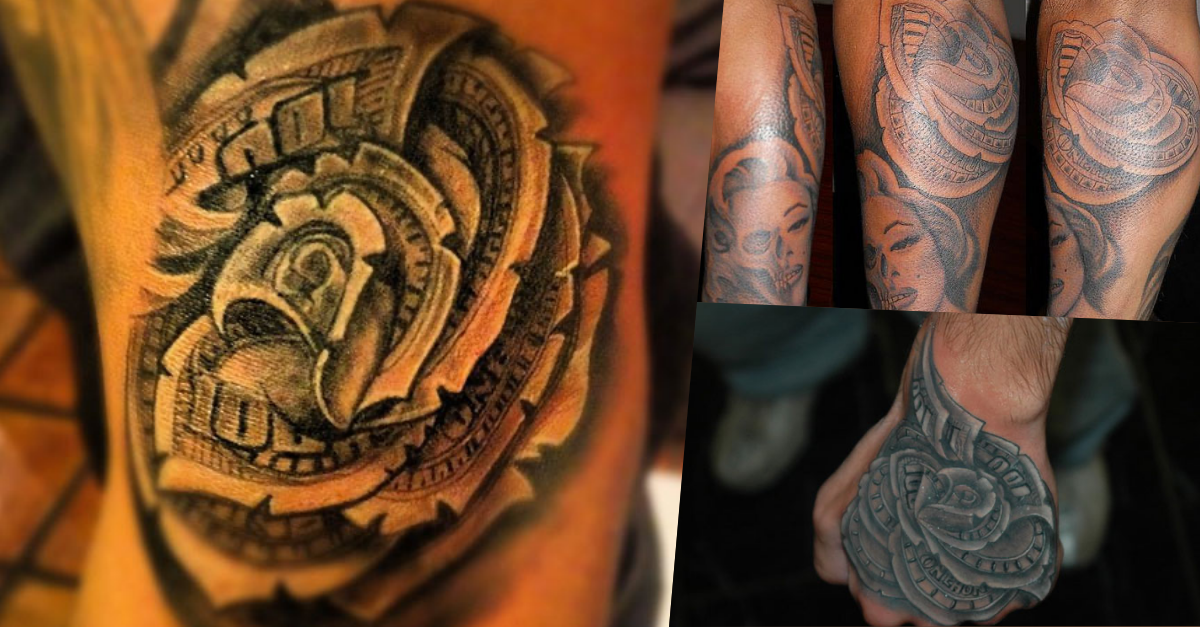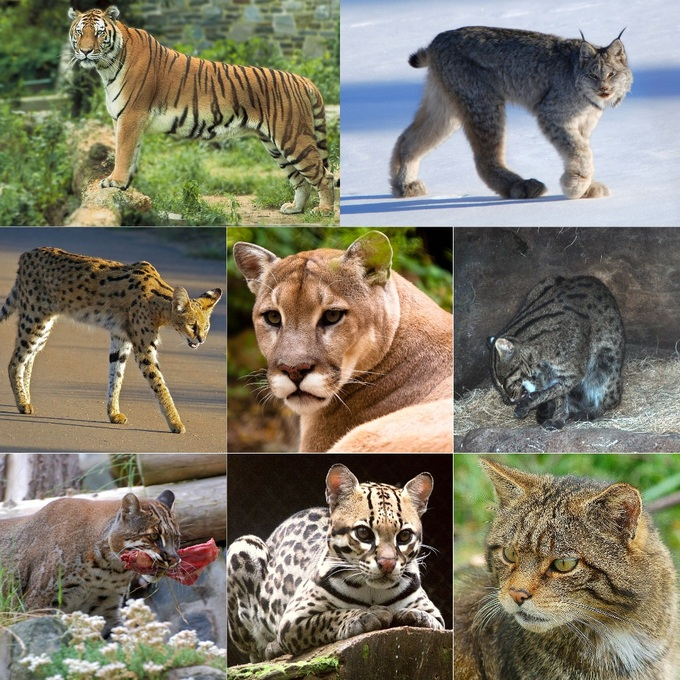
The cat family is one of the most diverse and successful in nature (Image: Wikipedia).
The feline family (Felidae) is divided into three genera, including Panthera (lion, tiger, leopard, clouded leopard, etc.), Acinonyx (leopard) and Felis (including all other ‘small’ cat genera) .
Among them, the domestic cat (Felis catus) is one of the most evolved species of the Cat family, even though their size is also among the smallest.
Talented Hunters
A common feature of all feline species is that they have evolved to be predators with exceptionally keen senses.
In particular, the hearing, sight and smell of cats are considered to be the most sensitive among terrestrial mammals.
Anatomical features such as round heads and similar bone structure suggest that there are 37 species of the cat family, and they all evolved from a common ancestor in Asia 10-12 million years ago.
To date, the cat family is distributed in all regions of the Earth, except for the North Pole, Antarctica and Australia. This is because the rise/fall of sea levels over the millennia has allowed cats to migrate and colonize different geographical regions.
They are considered the most developed carnivorous hunters of all mammals.
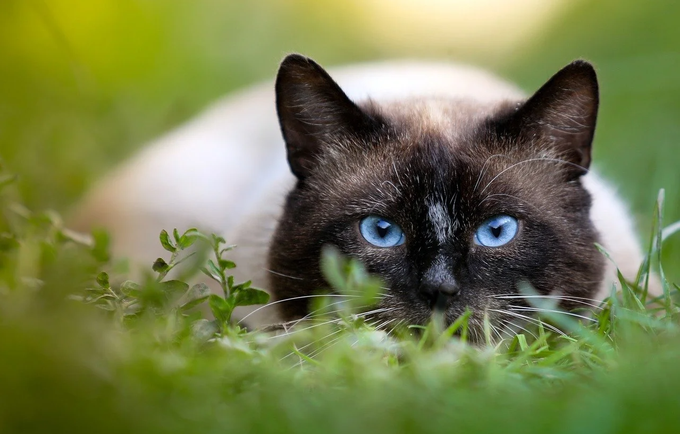
Interestingly, aside from the herd lion, all other wild cats evolved into solitary animals, with the ability to hunt and fend for themselves.
Also excluding lions, male and female cats are quite similar in appearance, although males are usually slightly larger.
Cats are highly territorial, as they tend to develop their own areas to hunt and mark territory primarily through scent.
They grow in a wide variety of coat colors and are extremely diverse, from monochromatic colors to a combination of streaks, stripes, black spots… These are adaptive traits that allow cats to camouflage and assist. support their predatory lifestyle.
Cat evolution and adaptation
Evidence of cats cohabiting with humans is evident from the fossil record. Of these, the oldest is probably in Egypt, about 3,600 years ago.
Here, the skulls of cats found in the Egyptian cat burial site identified them as Felis sylvestris lybica (African wildcat). However, the domestication of cats seems to have happened about 10,000 years ago or so, with the location being the Middle East.
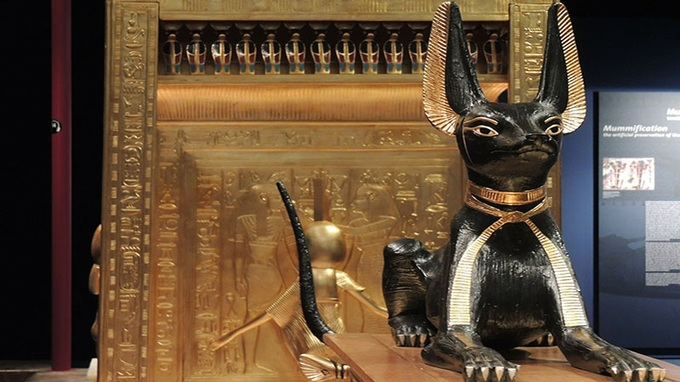
The image of a cat in Egyptian culture (Image: Getty).
Much evidence confirms that the cat was found next to the body of its owner in a tomb in Cyprus, about 9,500 years ago. As such, cats and humans clearly have a long history of bonding.
According to historians, the cause of this bond is actually rats. In particular, the human development shown in grain stocks has caused significant accumulation and proliferation in the house mouse species.
At that time, humans had a lot of difficulties in resisting the attack of rodents. However, since the arrival of cats (which were attracted by the increasing population of rats), humans have realized their value, leading to the domestication of cats.
Even so, domesticating cats is not the same way that dogs and other animals have been domesticated. In general, cats have not undergone major changes in domestication and their appearance and behavior are still very similar to their wildcat ancestors.
Accordingly, modern cats are still quite capable of surviving in the wild, and in fact many have returned to a state of existence in the wild.
Man’s relationship with cats was, from the beginning, a little more distant than that of dogs, for dogs helped people hunt and waited for people to share in the spoils. And human domestication of cats only partly removed them from the wild.
Characteristics of modern cats
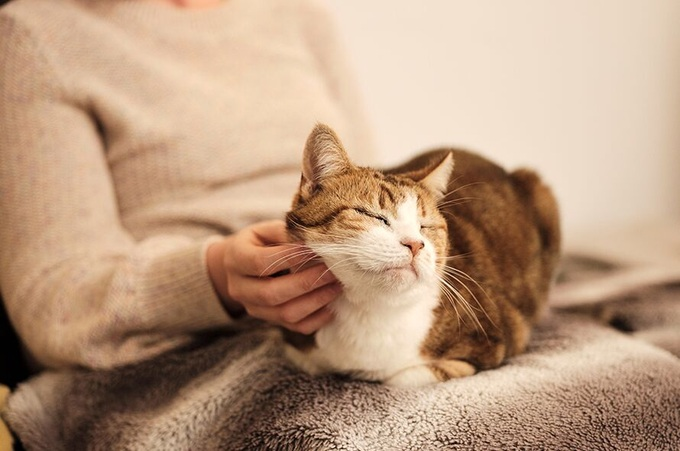
Cats live close to humans, but can completely adapt to wild living conditions (Image: Getty).
Genetic analysis has demonstrated that the DNA of today’s domestic cats closely resembles the DNA of Felis sylvestris lybica, a subfamily of the African wildcat.
They are similar in appearance to domestic tabby cats, although the coat is somewhat lighter. Individuals of this species are mainly scattered on the savannah with large territories because prey (mainly rodents) is relatively sparse.
Today’s domestic cats retain a number of traits from their ancestors due to their former life in the desert, including the ability to survive very low amounts of water, as well as very concentrated urine.
Their poop is also relatively drier for dogs, to minimize habitat loss.
Cats can also tolerate fairly high temperatures, despite their thick coats. Most of them do not show signs of discomfort until the skin temperature exceeds 52 degrees Celsius. Meanwhile, people begin to feel discomfort when the skin temperature exceeds 44.5 degrees Celsius.
Due to their close relationship with wildcats, domestic cats retain the ability to mate with this species. In some areas such as Scotland and Hungary, this has caused serious problems when domestic cats interbreed with native wildcats, resulting in a decreasing number of genetically distinct purebred feral cats.
Cat images in cultures
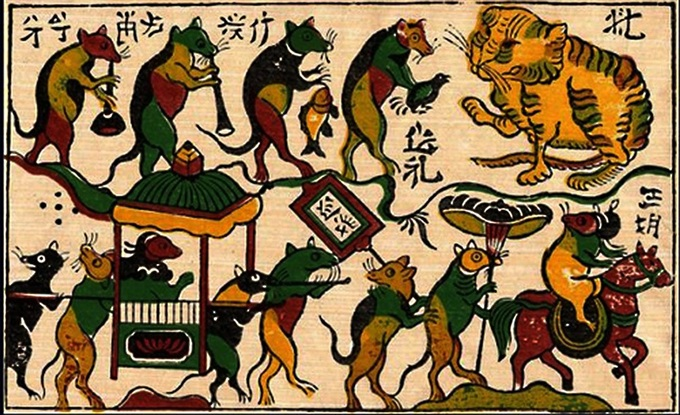
In the line of Dong Ho folk paintings of the Vietnamese people, the cat is depicted in the famous painting – “Mice wedding” (Photo: Public Domain/Wikipedia).
In ancient Egypt, archaeological studies show that cats were kept in families as a respected animal. At this time, the relationship between the ancient Egyptians and cats has many special meanings, they highly appreciate cats, even worshiping cats with the belief that cats are animals that symbolize sacred things. meaning, such as fertility, proliferation, power, or justice.
In Norwegian mythology, goddess Freyja symbolizes love, beauty, fertility, power, money… Goddess Freyja is often depicted next to cats. In old Norwegian folklore, farmers who wanted to find protection for their crops used to leave pans of milk in the fields. They see it as a way to invite the cats that serve the goddess Freyja to their fields, helping to protect the fields from being infested by rats.
In Russia, cats are considered a symbol of good luck. When a family moves into a new home that has a cat, they will let the cat enter the house first, and then the family members will follow. This is said to help bring luck to the owner during living in the new house.
In Japan, the bobtail cat is seen as a symbol of good prospects and a promising future. The image of “maneki neko” (waving cat) symbolizes luck and prosperity. The image of “maneki neko” is often depicted with a bob-tailed cat sitting on its hind legs, one front paw raised high.
In the Muslim community, cats are respected and protected animals, they always treat cats as best as possible with the belief that cats are animals that exist in both worlds: when people are alive and when it’s dead, so no one wants to “blame” a cat and then have to be judged when lying down. In general, Muslim communities around the world believe that being kind to cats is one of the best things to do in life.
In Vietnam, the cat is one of the twelve zodiac animals, representing the year of the Rabbit. In many cultures from East to West, people share the same concept of cats having many “lives”, although the concept of the number of “nets” that cats have in different cultures is different, but This concept all comes from observing cats and finding that cats have flexibility, flexibility, and agility that make them able to escape from life-threatening situations.



